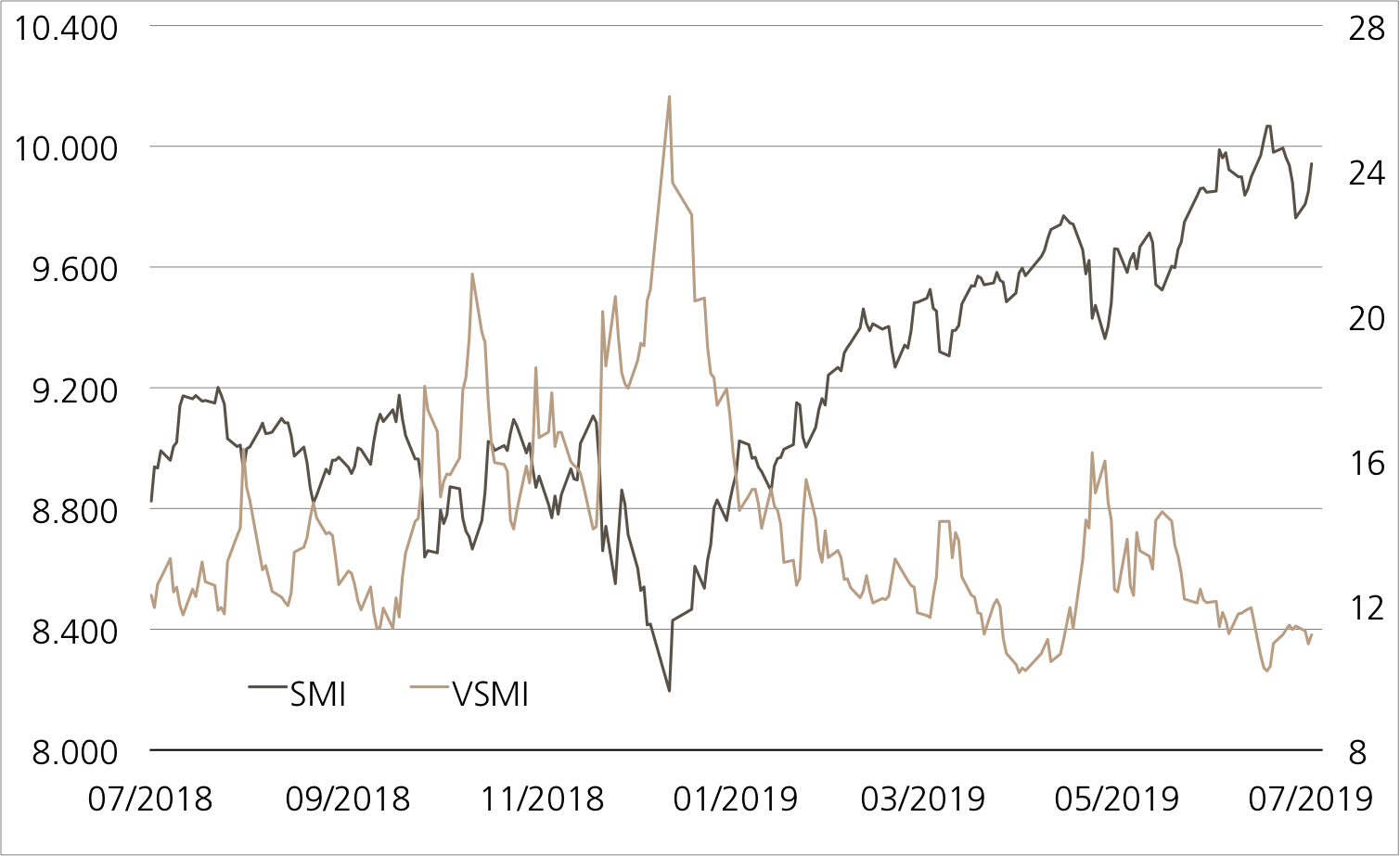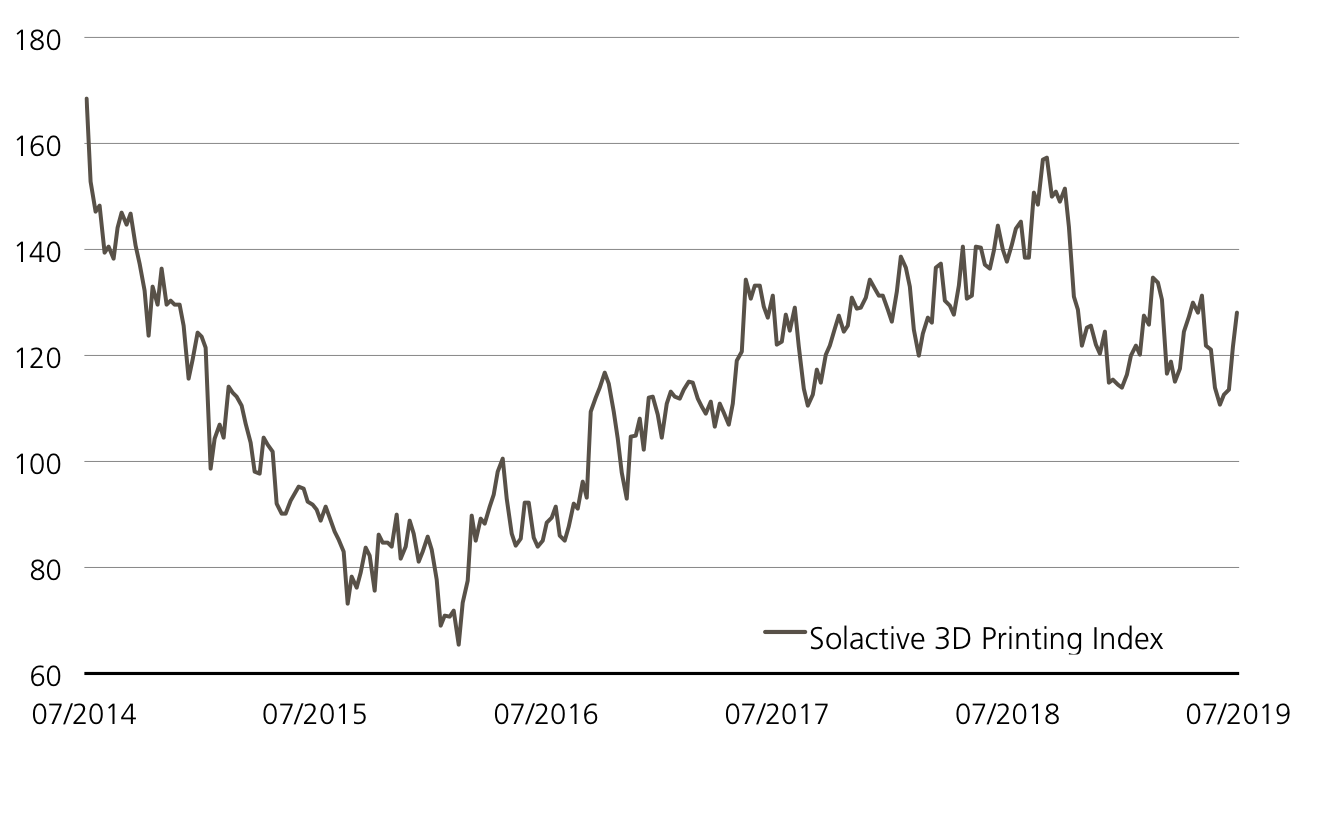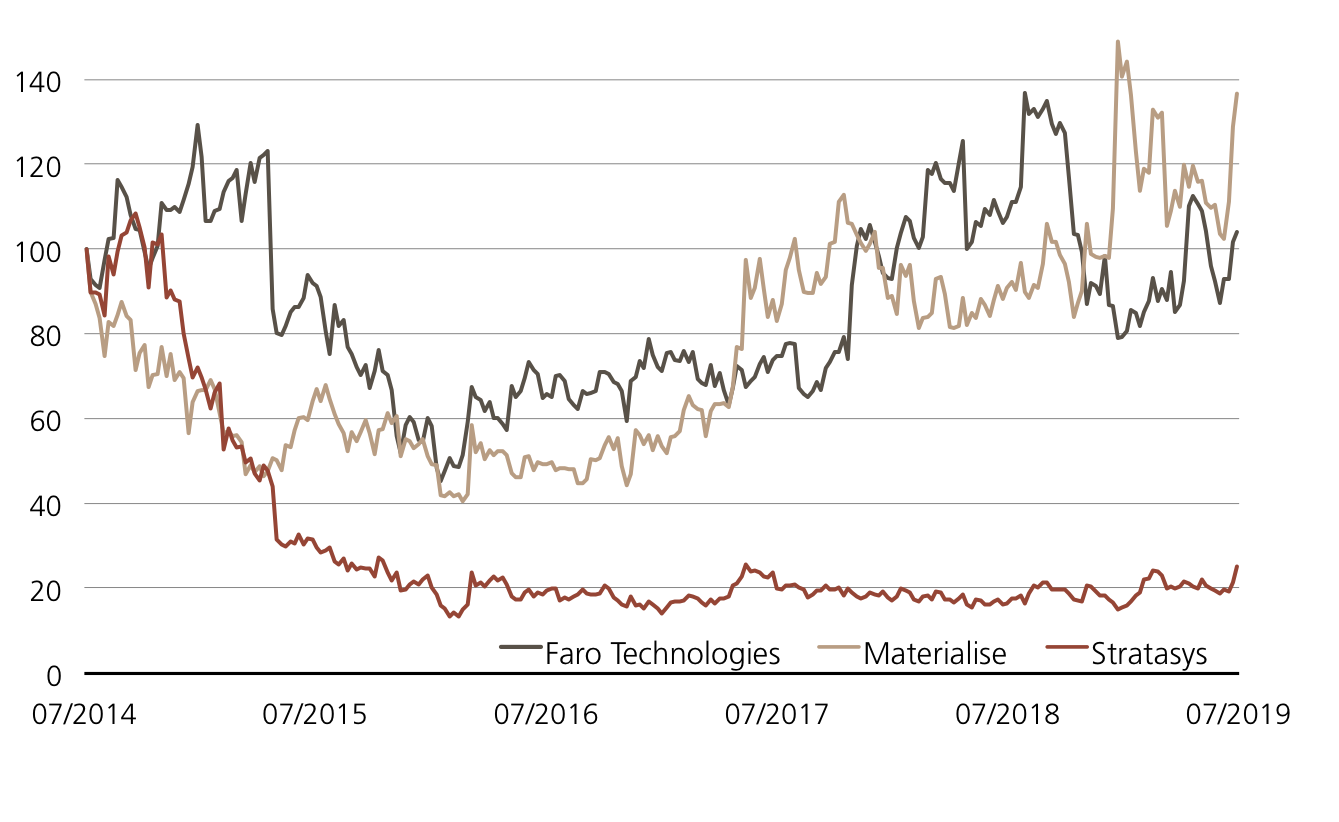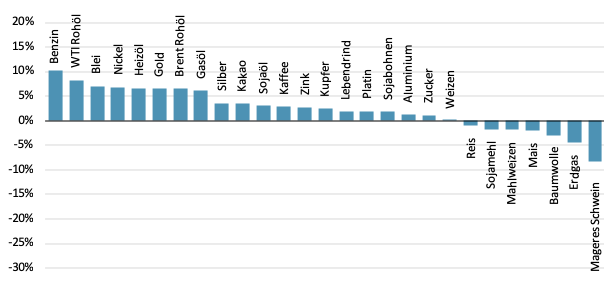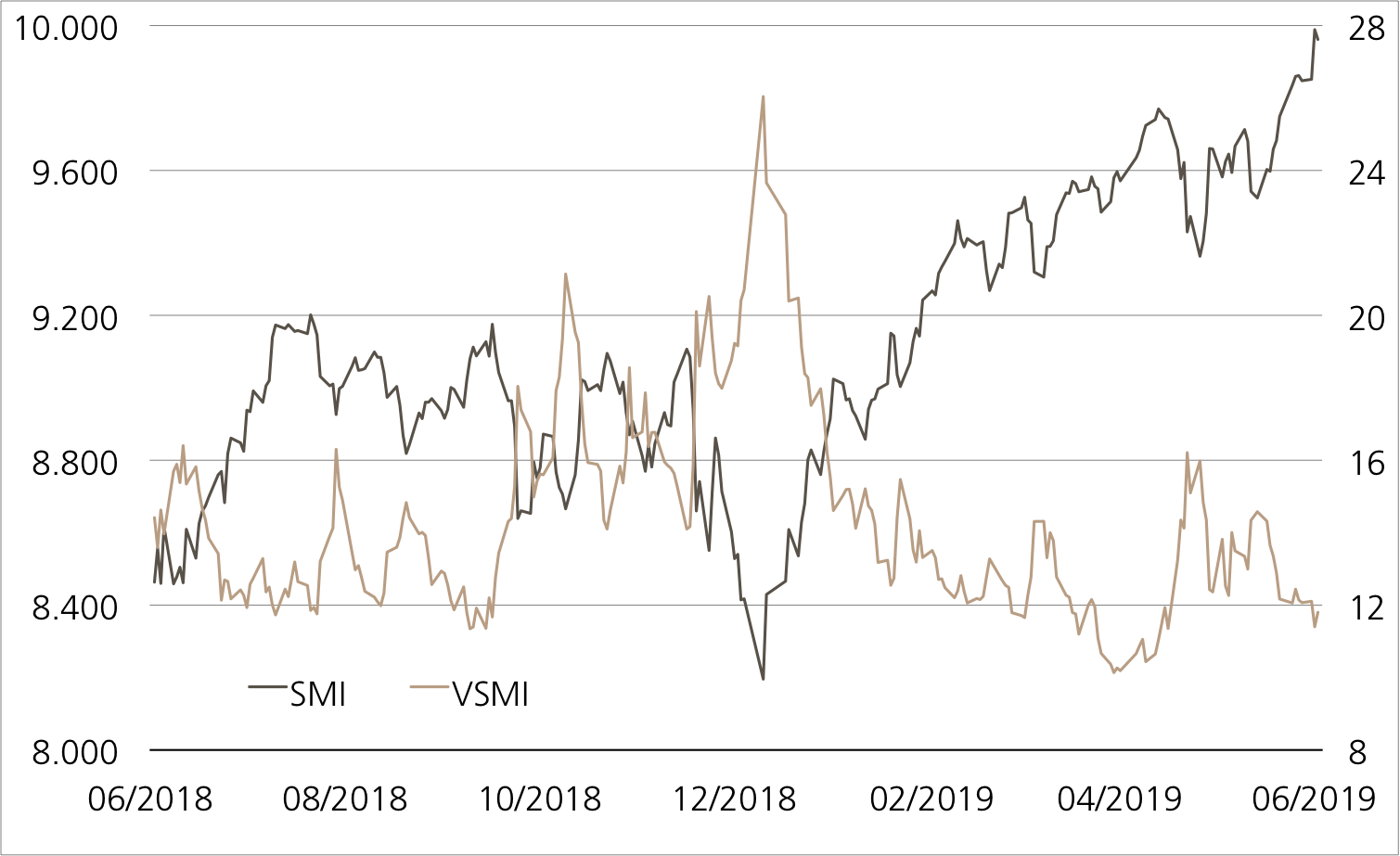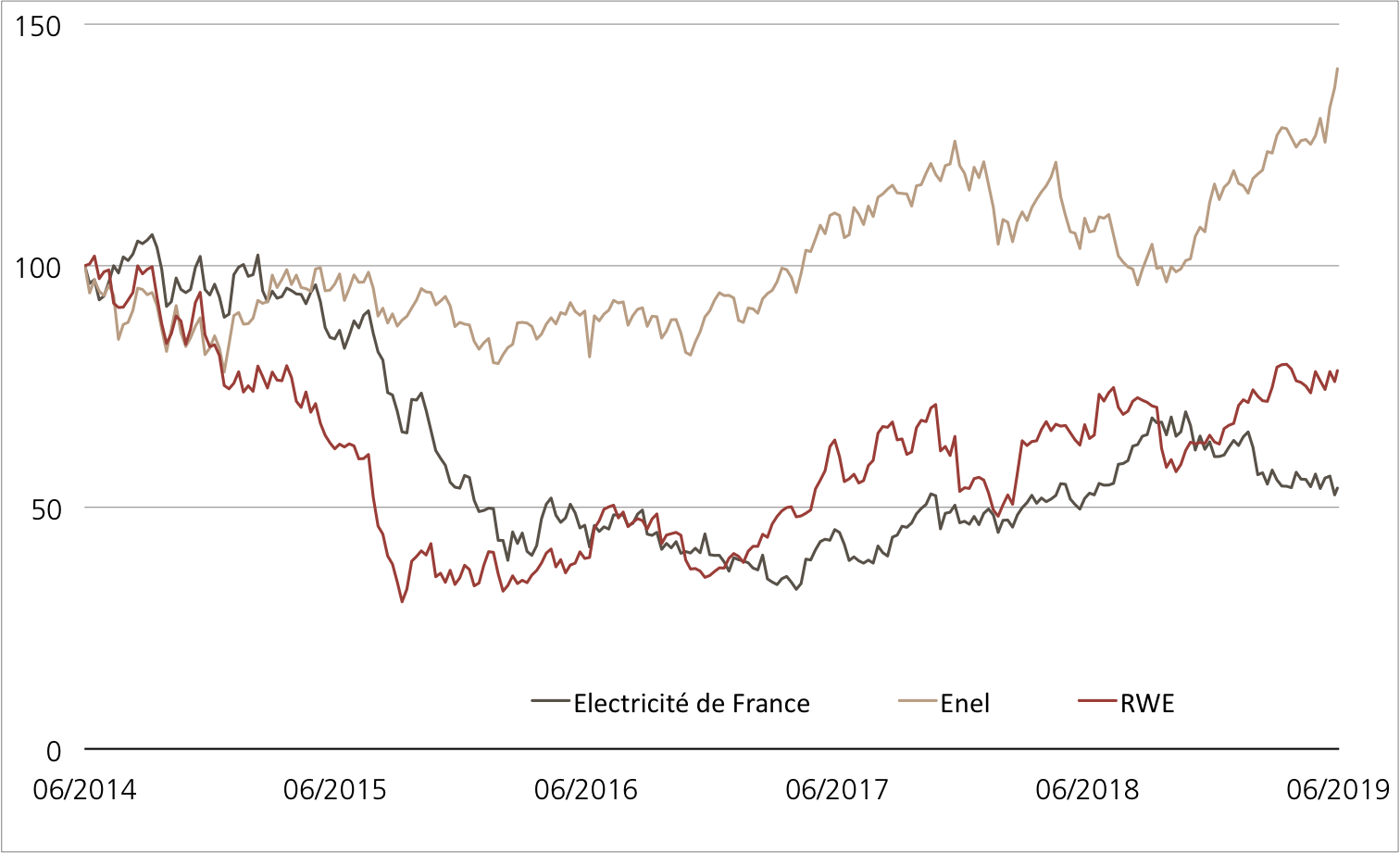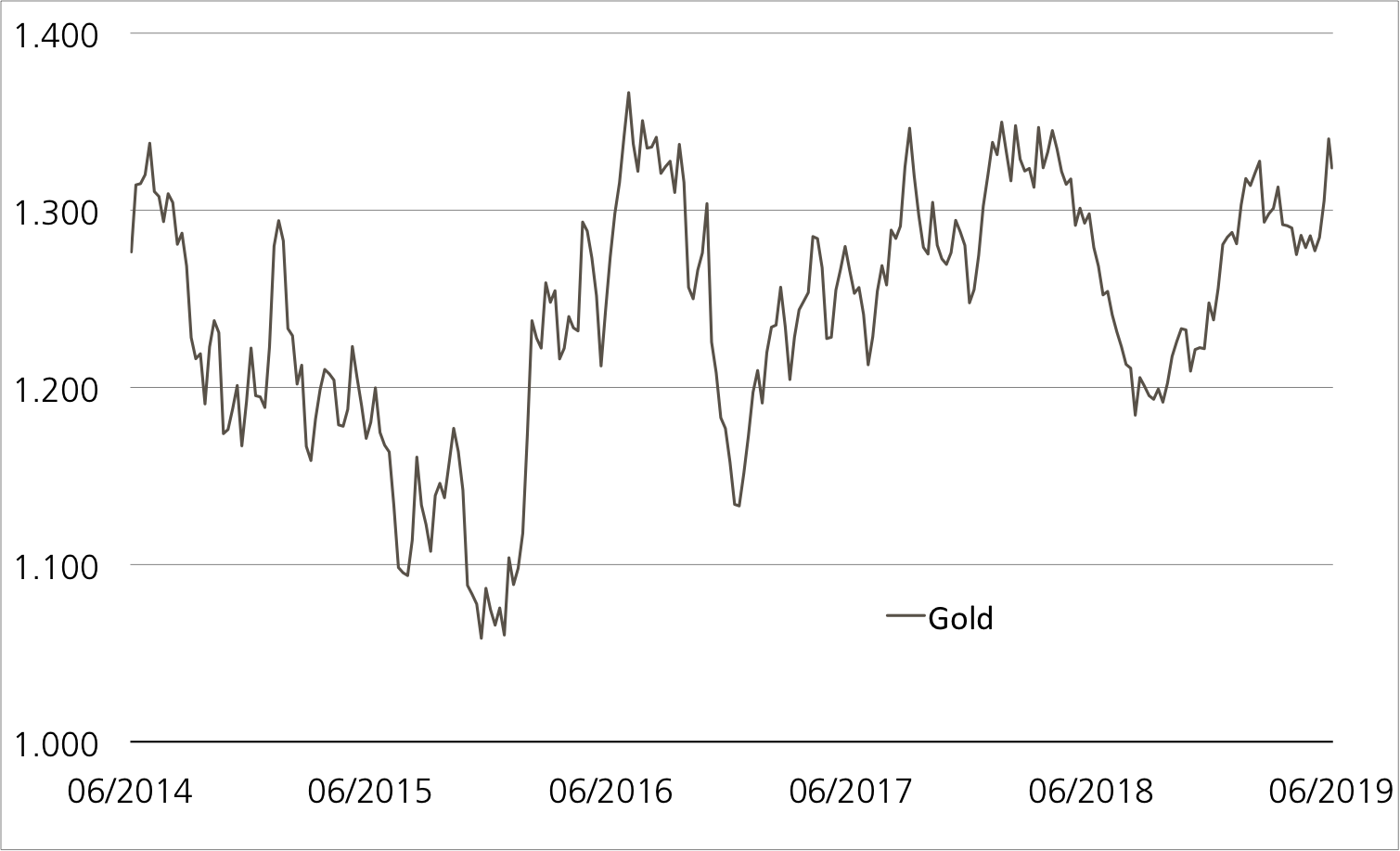Weekly-Hits: US-Technologiesektor & Ölmarkt

- Thema 1: US-Technologiesektor – Giganten öffnen ihre Bücher
- Thema 2: Ölmarkt – Diffuse Gemengelage
US-Technologiesektor
Giganten öffnen ihre Bücher
Microsoft hat einen Lauf, sowohl operativ als auch an der Börse: Im vierten Quartal des Fiskaljahres 2019 verbuchte der Technologiekonzern ein Umsatzwachstum von zwölf Prozent auf 33.72 Milliarden US-Dollar. Analysten hatten mit knapp einer Milliarde Dollar weniger gerechnet. Mit 1.72 US-Dollar übertraf auch der Gewinn je Aktie die Erwartungen (1.21 US-Dollar) deutlich. Einmal mehr profitierte das Unternehmen von der Fokussierung auf das Cloud-Geschäft: Die Sparte Azure für die internetbasierte Auslagerung von Daten und Applikationen steigerte die Umsätze im Berichtsquartal um 64 Prozent. Azure zählt zum Segment «Intelligent Cloud». Für diese Sparte gab Microsoft eine über den Erwartungen liegende Prognose ab. (Quelle: Thomson Reuters, Medienbericht, 18.07.2019) Die Wall Street zeigte sich begeistert: Nach der Zahlenvorlage dehnte sich die Kapitalisierung des Unternehmens aus dem Silicon Valley bis knapp 1.08 Billionen US-Dollar aus. Damit konnte Microsoft den Status als grösster Börsenkonzern der Welt untermauern.¹
Die Vormachtstellung kommt nicht von ungefähr: Während Microsoft das Ergebnis deutlich steigern konnte, ist der Gewinnmotor im IT-Sektor zuletzt ins Stocken geraten. Analysten gehen im Schnitt davon aus, dass der Profit bei den US-Unternehmen aus der Information Technology im zweiten Quartal 2019 um ein Zehntel geschrumpft ist. Mitte Jahr lag der Konsens sogar noch bei einem Rückgang von 11.9 Prozent. (Quelle: Factset, Earnings Season Update, 19.07.2019)
An den kommenden Tagen könnten sich die Schätzungen abermals verschieben, da weitere Branchenschwergewichte ihre Bücher öffnen. Bereits am heutigen Donnerstag publiziert Intel nach Börsenschluss in New York die Quartalsbilanz. Am 30. Juli steht das Zahlenwerk von Apple auf der Agenda. Per Ende Juni war der iPhone- und Mac-Hersteller das zweitgrösste Mitglied im S&P 500™ Information Technology Index. Insgesamt sind in dieser Auswahl 68 IT-Unternehmen enthalten, die sich mit Megatrends wie Cloud, Künstliche Intelligenz oder Mobiles Internet beschäftigen. (Quelle: S&P Dow Jones Indices, Indexfactsheet, 28.06.2019)
Chancen: Der ETT (Symbol: ETINFU) bietet ein effizientes, transparentes und kostengünstiges Investment in den zukunftsträchtigen Sektor. Typisch für diese Struktur fallen keine laufenden Gebühren an.² Zusammen mit den beiden Internetriesen Alphabet und Amazon bildet Apple die Basis für einen neuen ER Kick-In GOAL (Symbol: KDXUDU). Das prominente Trio macht einen Coupon in Höhe von 8.75 Prozent p.a. möglich, während die Barrieren bei 55 Prozent der Anfangsfixierung liegen. Bitte beachten Sie: Aufgrund der Early Redemption Funktion ist eine vorzeitige Rückzahlung der Emission möglich.
Risiken:Die vorgestellten Produkte sind nicht kapitalgeschützt. Eine negative Entwicklung des Basiswerts führt beim ETT zu entsprechenden Verlusten. Notiert einer der Basiswerte beim Kick-In GOAL während der Laufzeit einmal auf oder unter dem jeweiligen Kick-In Level (Barriere) und kommt zudem das Early Redemption Feature nicht zum tragen, kann die Tilgung am Verfalltag durch Bartilgung entsprechend der (vom Strike aus) schwächsten Kursperformance aus dem Trio erfolgen (höchstens jedoch zum Nominalwert zuzüglich Coupon). In diesem Fall sind Verluste wahrscheinlich. Zudem trägt der Anleger bei Strukturierten Produkten das Emittentenrisiko, so dass das eingesetzte Kapital – unabhängig von der Entwicklung der Basiswerte – im Falle einer Insolvenz der UBS AG verloren gehen kann.


²) Die Konditionen der ETTs werden jährlich überprüft und können mit einer Frist von 13 Monaten nach Bekanntgabe angepasst werden.
| Index | Stand | Woche¹ | |
|---|---|---|---|
| SMI™ | 9’907.68 Pkt. | -0.3% | |
| SLI™ | 1’526.52 Pkt. | -0.3% | |
| S&P 500™ | 3’019.56 Pkt. | 1.2% | |
| EURO STOXX 50™ | 3’532.90 Pkt. | 0.9% | |
| S&P™ BRIC 40 | 4’357.25 Pkt. | -0.4% | |
| CMCI™ Compos. | 906.33 Pkt. | 0.0% | |
| Gold (Feinunze) | 1’423.60 USD | 0.0% | |

Ölmarkt
Diffuse Gemengelage
Chancen:Naturgemäss spielt die Lage am Rohstoffmarkt eine wichtige Rolle für das Potenzial der Aktien grosser Ölmultis. Der neue Callable Kick-In GOAL (Symbol: KDZBDU) bringt BP, Total und Royal Dutch Shell zusammen. Selbst wenn das europäische Branchentrio auf der Stelle tritt oder moderat nachgibt, ist mit dieser Emission eine attraktive Rendite möglich: Anleger erhalten in jedem Fall den Coupon von 7.00 Prozent p.a. Solange kein Basiswert auf oder unter die Barriere bei 65 Prozent des jeweiligen Startniveaus fällt, zahlt die Emittentin auch das Nominal vollständig zurück. Erstmals am 7. August 2020 und anschliessend alle drei Monate hat UBS AG das Recht, den Kick-In GOAL vorzeitig zu kündigen. Bei einer Ausübung der Callable Funktion würden Anleger zum nächsten Coupontermin die anteilige Ausschüttung sowie das vollständige Nominal überwiesen bekommen.
Risiken:Kick-In GOALs sind nicht kapitalgeschützt. Notiert einer der Basiswerte während der Laufzeit einmal auf oder unter dem jeweiligen Kick-In Level (Barriere) und kommt zudem das Callable Feature nicht zum Tragen, kann die Rückzahlung am Verfalltag durch Bartilgung entsprechend der (vom Strike aus) schwächsten Performance aus dem Trio erfolgen (höchstens jedoch zum Nominalwert zuzüglich Coupon). In diesem Fall sind Verluste wahrscheinlich. Zudem trägt der Anleger bei Strukturierten Produkten das Emittentenrisiko, so dass das eingesetzte Kapital – unabhängig von der Entwicklung der Basiswerte – im Falle einer Insolvenz der UBS AG verloren gehen kann.

7.00% p.a. Callable Kick-In GOAL auf BP / Total / Royal Dutch Shell
| Remove | ||
|---|---|---|
| Symbol | KDZBDU | |
| SVSP Name | Barrier Reverse Convertible | |
| SVSP Code | 1230 (Callable) | |
| Basiswerte | BP, Total, Royal Dutch Shell | |
| Handelswährung | CHF (Quanto) | |
| Coupon | 7.00% p.a. | |
| Kick-In Level (Barriere) | 65% | |
| Emittentin | UBS AG, London | |
| Zeichnung bis | 07.08.2019, 15:00 Uhr | |
Termsheet Weitere Produkte sowie Informationen zu Chancen und Risiken finden Sie unter: ubs.com/keyinvest Quelle: UBS AG Stand: 24.07.2019
²) Die Konditionen der ETTs werden jährlich überprüft und können mit einer Frist von 13 Monaten nach Bekanntgabe angepasst werden.





